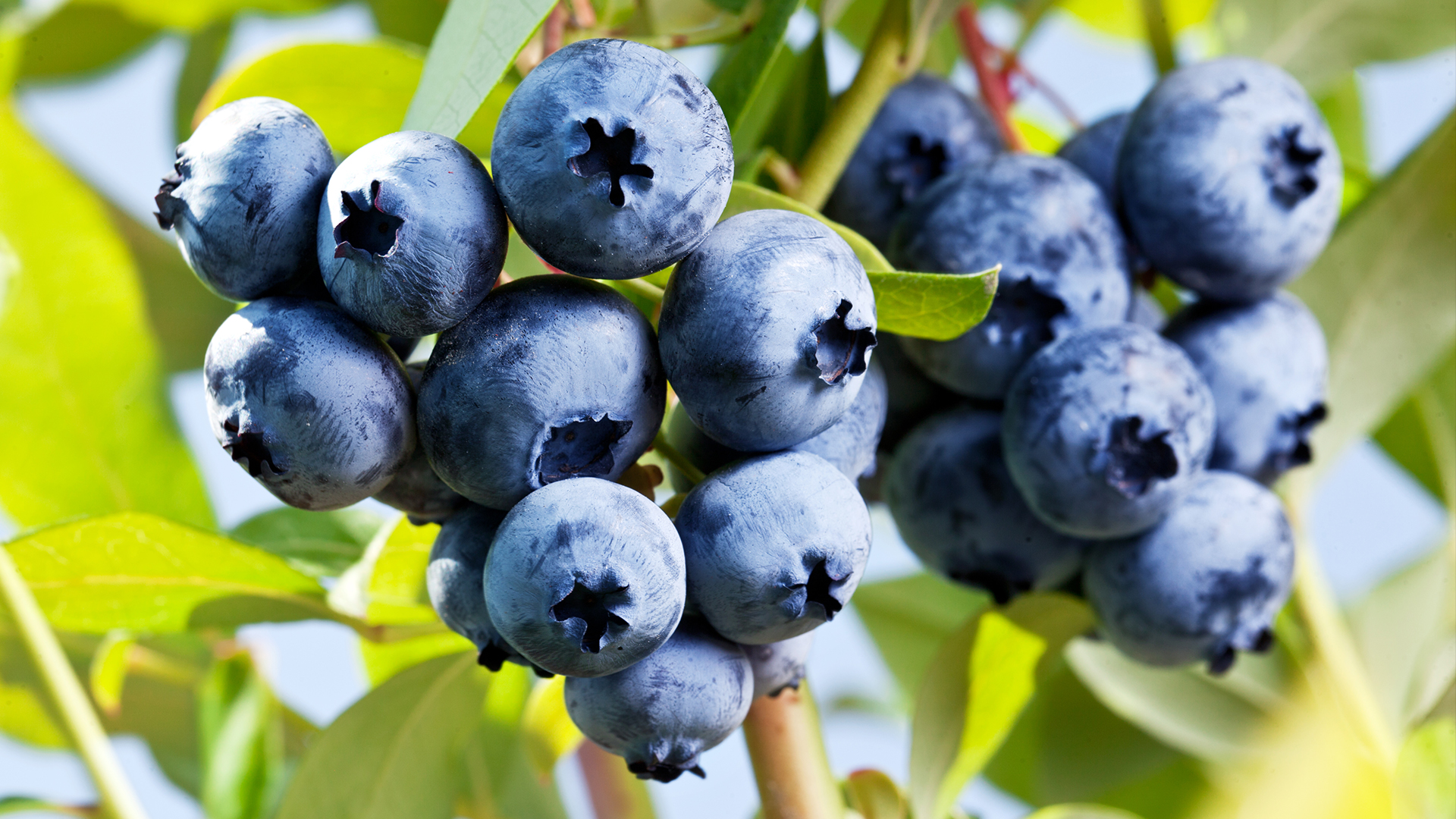
Why are blueberries blue?
We finally understand why blueberries are blue — and the secret lies not in the flesh or skin, but the waxy coating around it.

Blueberries have a particularly distinctive color — hence their name.
But blue is a rare color in nature and few naturally occurring organic compounds give living things this color. So why exactly are blueberries blue?
It turns out that scientists recently figured out this conundrum — and it's not the fruit skin.
In a study published Feb. 7 in the journal Science Advances researchers found that tiny, randomly-arranged crystals in the fruit's waxy coating scatter light, giving blueberries their signature indigo appearance.
Blue hues rarely turn up in living things. The majority of examples, such as bluebells, butterflies and tropical frogs, rely on clever trickery to produce this shade (mainly to deter predators). Even blue rocks and minerals, like sapphires and lapis lazuli, are hard to come by.
And blueberries were even more of a mystery.
"The blue of blueberries can't be 'extracted' by squishing — because it isn't located in the pigmented juice that can be squeezed from the fruit. That was why we knew that there must be something strange about the color," study lead researcher Rox Middleton, a researcher at the University of Bristol in the U.K., said in a statement.
Sign up for the Live Science daily newsletter now
Get the world’s most fascinating discoveries delivered straight to your inbox.
While blueberries contain strong pigments called anthocyanins, these have a deep reddish-purple color, completely different from the indigo shade of the fruit skin. However, like most plants, blueberries are coated in a thin layer of protective wax which acts as a waterproof coating and barrier against infection.
Middleton's team suspected the blue hue must come from outside of the fruit. So they removed a sample of this wax and recrystallized it on a piece of cardboard. To their delight, this created an ultra-thin crystalline coating with blueberry's trademark indigo color. When they looked closely at this layer, they found a random distribution of crystal structures within the wax which scatter blue and UV light to produce the fruit's signature color.
"It shows that nature has evolved to use a really neat trick, an ultrathin layer for an important colorant," Middleton said. "It was even more exciting to be able to reproduce that color by harvesting the wax to make a new blue coating that no-one's seen before."
The discovery opens up exciting opportunities for sustainable and biocompatible blue coatings and colorants. These could be used in everything from sensors, to construction, to automotive paints, the researchers wrote in the study. But the extensive and largely unknown functions of these waxes in plants also means that these new colorants potentially have many other beneficial properties which researchers haven't even begun to explore yet.
The team is now seeing if there are simpler ways to prepare and apply the wax.
"Building all that functionality of this natural wax into artificially engineered materials is the dream!" Middleton said.

Victoria Atkinson is a freelance science journalist, specializing in chemistry and its interface with the natural and human-made worlds. Currently based in York (UK), she formerly worked as a science content developer at the University of Oxford, and later as a member of the Chemistry World editorial team. Since becoming a freelancer, Victoria has expanded her focus to explore topics from across the sciences and has also worked with Chemistry Review, Neon Squid Publishing and the Open University, amongst others. She has a DPhil in organic chemistry from the University of Oxford.










